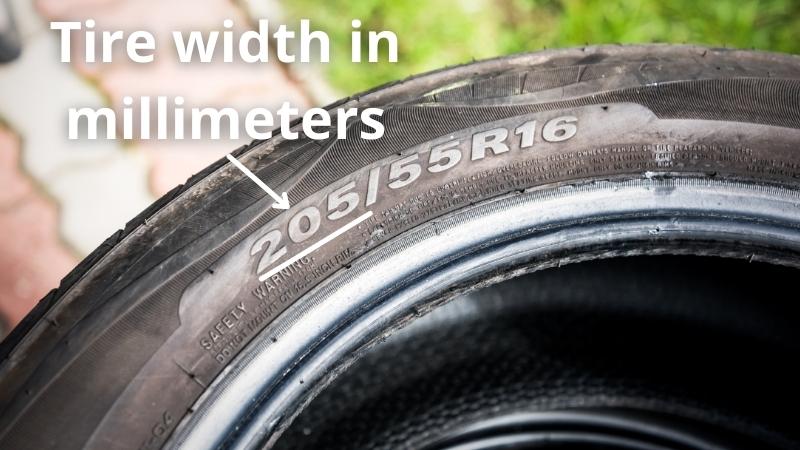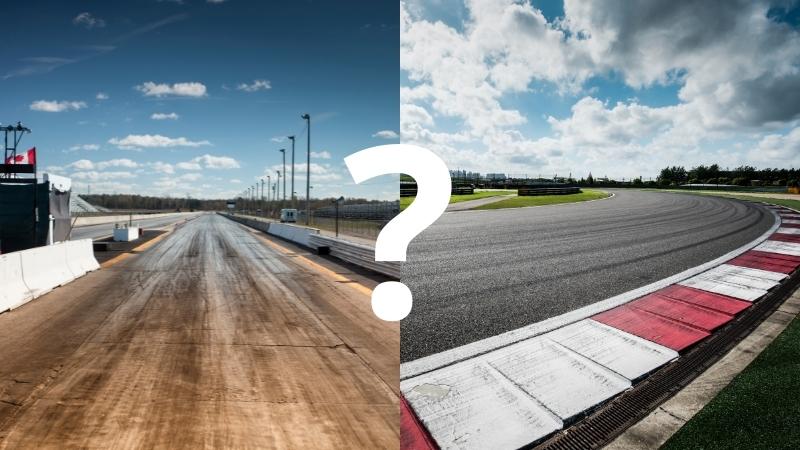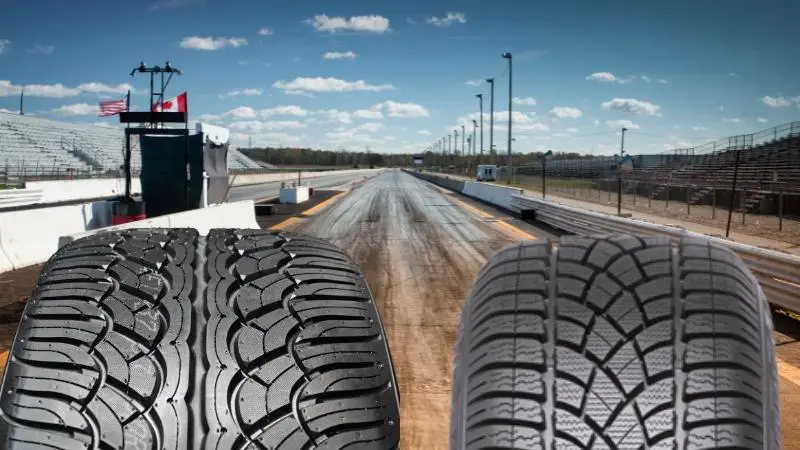Lots of discussions and questions revolve around narrow and wider tires. There are several opinions on which is better and their effects on certain functionalities.
In this piece, the focus is on narrower tires. Are they faster? What role does tire width play in a vehicle’s speed?
If you’ve been searching for answers to any of these questions, you’ve chosen the right place. In this piece, you’ll learn the answers to these questions and other fascinating facts you need to know.
What Qualify a Tire as Being Narrow or Wide?

Measuring tires has its clear-cut processes and procedures. Also, tires usually have markings that provide instant information about them. For instance, if you have a tire with the marking 205/55 R16 94V XL.
The first number, 205 in this case, is the tire width in millimeters when the air pressure is set at normal. Generally speaking, tread width is usually thinner than the overall width. Tread width also varies depending on tire type and manufacturer.
When it comes to most passenger cars, crossovers and SUVs, a narrow tire usually lies around 150-160 millimeters in width, while a wide tire usually lies around 260-280 millimeters in width. Sport cars usually have tires over 300 millimeters in width.
Are Narrow Tires Faster Than Wide Tires?
Now that we know what narrow tires are and how to check tire width, let’s examine whether narrow tires are faster than wider tires.
If you were to take two tires, one narrow and one wide (all else being equal), and have them race each other by rolling down a hill, the narrow tire would be faster because it will have less rolling resistance, both when it comes to air resistance and friction with the ground. Sure, the wide tire might weigh a bit more, but not so much that it would roll faster than the narrow tire.
With that said, whether narrow or wide tires are faster when they are mounted on your car depends on the road surface, car type and what being “faster” is defined as.
For instance, a 4-wheel-drive passenger car with a moderate power and torque output, doing a drag race on dry tarmac using narrow tires, will in all likelihood be faster than the same car doing the same drag race using wide tires, just because the rolling resistance will be lower.
As it turns out, it’s not as easy as just saying that one tire width is faster than another, there are simply to many factors that come into play here.
Read on to learn more about these factors.
Factors Determining Whether Narrow or Wide Tires Are Faster
Okay, so there are multiple factors to consider when it comes to determining whether narrow or wide tires are faster when they are mounted on your vehicle. Let’s examine these factors one by one:
1. Definition of “faster”

This is the most important aspect to take into consideration when determining whether narrow or wide tires are faster.
Afterall, do we talk about being faster running a drag race or a twisty race circuit? These two racing branches are very different and tire width will play an important role in being as fast as possible in any of these races.
Let’s start with drag race first. Drag race is all about accelerating and reaching top speed in the fastest time possible. Since narrow tires have less rolling resistance compared to wide tires, they should be faster, right? Well, in some cases yes, and in other cases no. This depends on the vehicle type and surface, which we’ll look at later.
Okay, so what about doing a twisty race circuit? A race circuit is all about setting the quickest lap and/or overall time in order to be considered the fastest. This means that the tires must be optimal for accelerating, braking, corner handling, and likely enduring top speeds as well.
In this case, wide tires will most likely be able to set faster times compared to narrow tires because they provide better corner handling and braking. Two things that affect the overall speed during a circuit race more than simply being able to accelerate quickly.
2. Vehicle type
The type of vehicle that the tires are mounted on will determine whether a narrow or wide tire is faster. To illustrate this, let’s take the drag race example again.
One reason why you often see very wide tires being used in competitive drag racing is because most quick drag race cars have an insane amount of power and torque, combined with being rear-wheel driven to make them as light as possible, and to also cause as little drive chain power loss as possible.
These two factors forces the drag race car to use wide tires in order to be grip the surface and allow all the power produced by the engine to accelerate the car forward. Using narrow tires in this case would simply result in too little contact with the surface, causing the wheels to “burnout” instead of gripping the surface and pushing the car forward.

Now, this would be a different story entirely if we would change the vehicle type. So, let’s do that.
Let’s take a car with a more moderate 200 horsepowers and 4-wheel-drive. The 4-wheel-drive drastically increases the amount of road surface the car can use to accelerate the vehicle forward. This in combination with the fact that it “only” has 200 horsepowers will allow this car to accelerate as quickly as possible, even when using narrow tires.
This is true simply because it doesn’t have enough power to lose traction with the surface, especially not with the 4-wheel-drive availabe as well.
So, in this case, with the fact that a narrow tire has less rolling resistance, it would make sense that using narrow tires would result in a faster drag race than what the same car would do using wide tires.
3. Road surface
The third and final factor determining whether narrow or wide tires are faster, is the road surface.
For instance, driving on newly laid out dry tarmac will allow your tires to grip the surface very well. This, depending on the car (as explained above), will likely allow maximum grip even when using narrow tires, making narrow tires faster because they allow for less rolling resistance.
On the other hand, if the tarmac is wet from rain, making it a lot slippier, then wider tires will likely be faster since they will have a larger contact are with the surface, leading to higher grip. A narrow tire will simply start spinning on a rainy surface, instead of pushing the car forward during acceleration.
Another example where road surface will determine whether a narrow or wide tire will be faster is when driving on very slipper surfaces, such as on snow and ice. On these surfaces it’s been shown that narrow tires are usually always faster simply because they “dig” down easier and hence get better traction compared to wider tires.
Now, all of this road surface stuff just mentioned will also depend on both factors mentioned earlier. They will all affect one another.
Here are a few examples summarized to explain why narrow or wide tires are faster depending on the circumstances and factors that are present:
- Wide tires will be faster than narrow tires when used in a drag race, especially if the car is 2-wheel-driven and has a powerful engine.
- Wide tires will almost always be faster than narrow tires when used in a twisty circuit race.
- Narrow tires will be faster than wide tires when used on a car with moderate power, especially if the car has 4-wheel-drive.
- Narrow tires will be faster than wide tires when used driving in snow and mud because it achieves better traction.
Why do Narrow Tires Feel Faster?
Even though narrow tires are not always faster as explained above, they ususally feel faster.
Why is this?
A couple of factors are responsible for this. Let’s examine some of them here:
Higher Vibration Frequencies
Narrow tires tend to touch the road more quickly and make any abnormalities in the road surface quite noticeable. When driving with a wider tire, you will often not notice any of these abnormalities since the tire is wider.
As a result, you feel inauthentic simulations of speed that are not exactly accurate.
High Pressure
Narrower tires are often pumped at greater pressure than broader ones. As a result, they can convey more minor road imperfections more quickly.
There is an increase in the frequency of vibration because they are narrower. As a result, skinny tires feel quicker. You may see whether this is true by comparing the speed of your narrow tires with and without proper inflation.
Conclusion
If you want to go faster, the width of your tires should be taken into consideration and will depend a lot on vehicle type, road surface, and what speed is defined as.
Hi, my name is Niklas, the head content creator & CEO of Whirling Wheelz. I am very interested in vehicles of all kinds, mainly cars. I have a car mechanics degree from high school and a big hobby of mine is to follow the WRC (World Rally Championship) both online and through travel.


